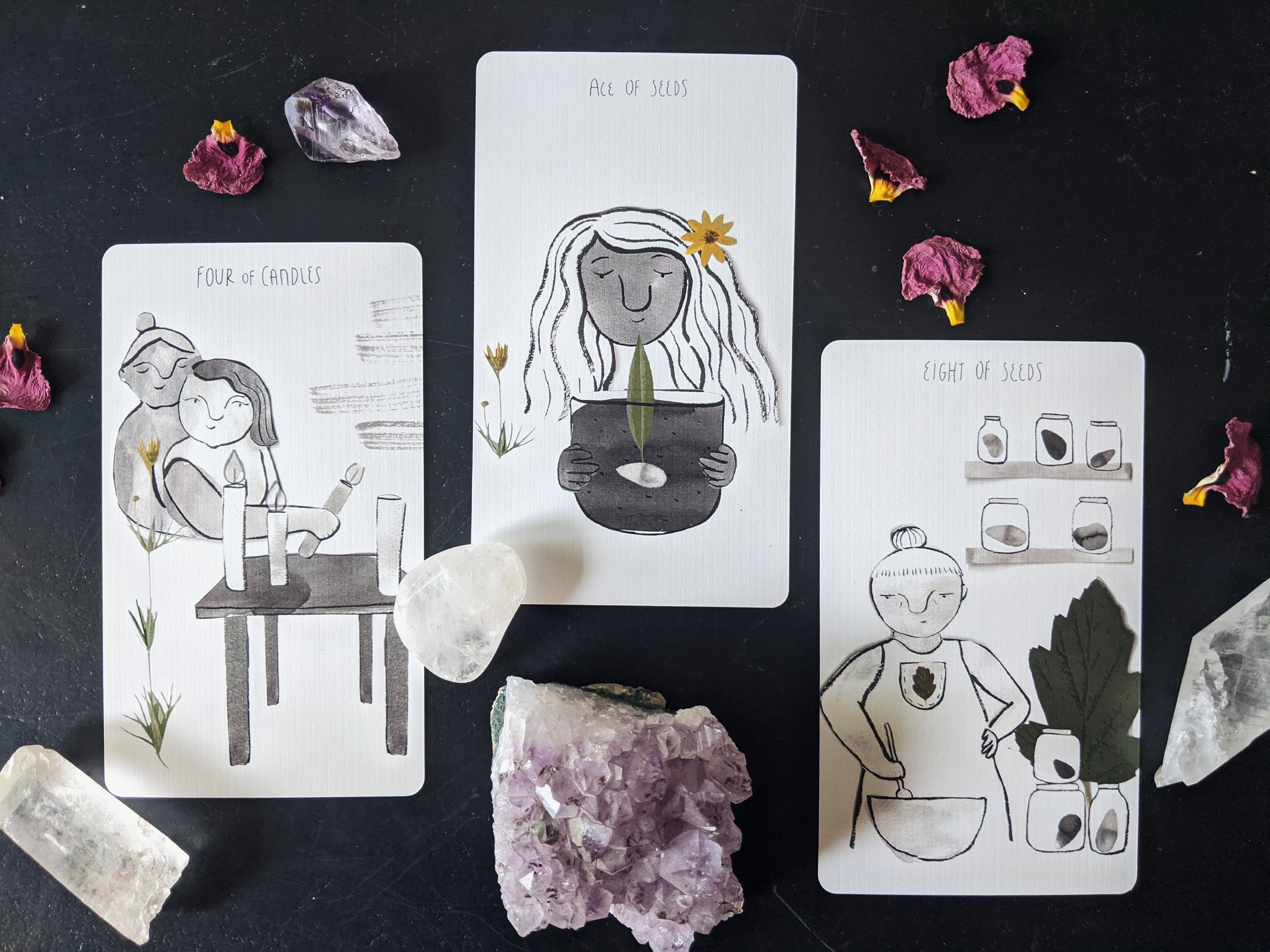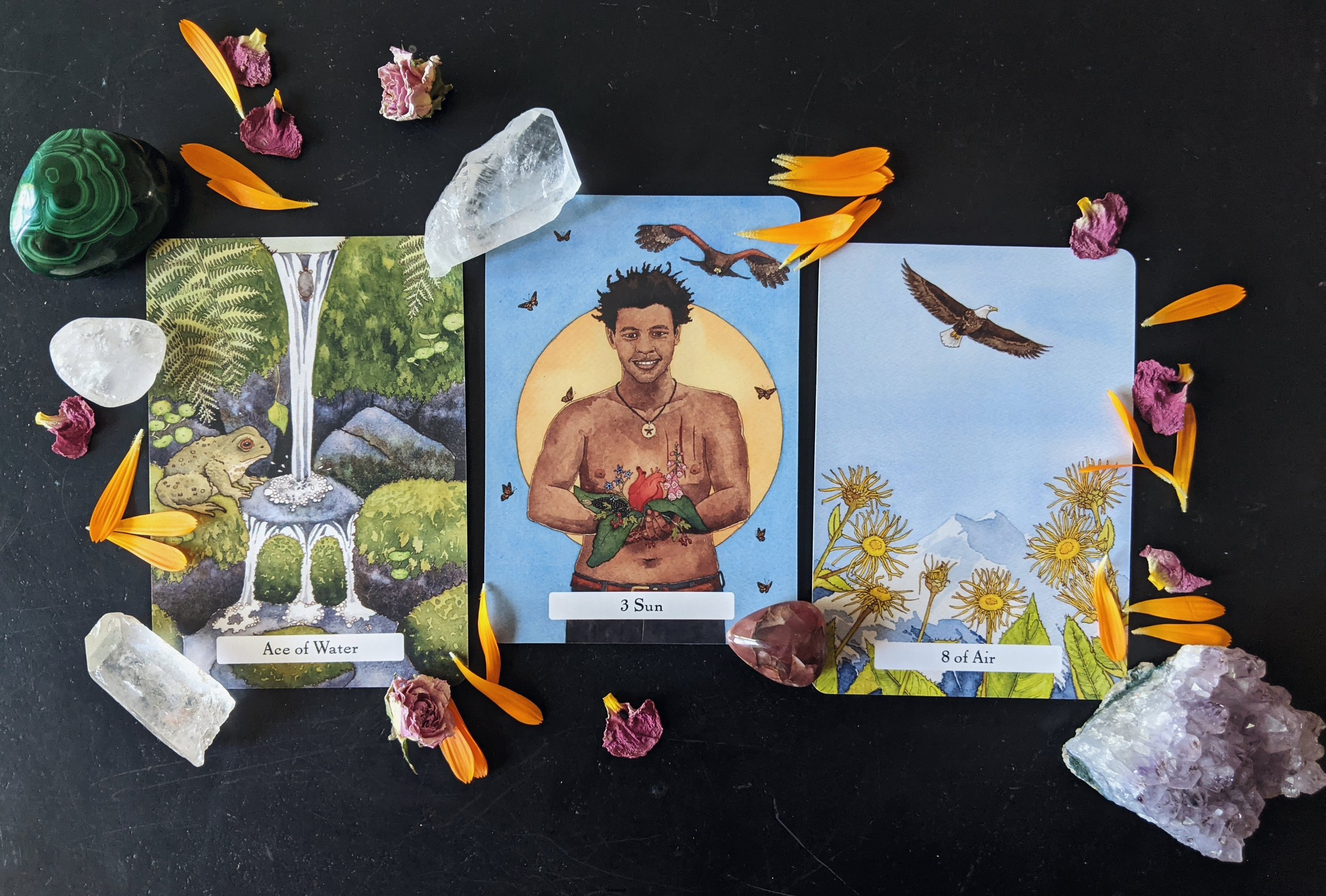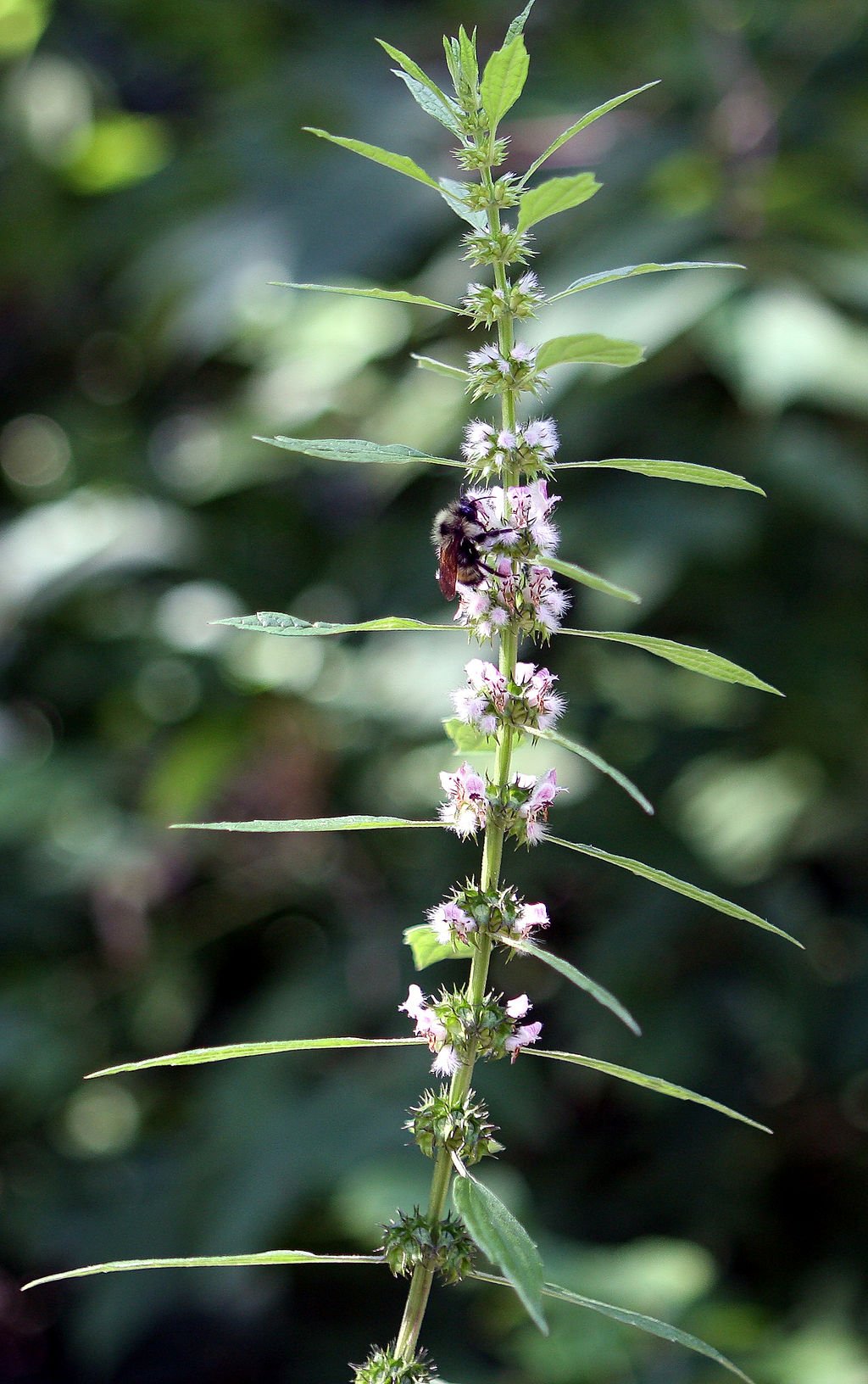My Favorite Tarot Decks for Herbalists & Plant Folk
As an herbalist who reads the tarot (and a tarot reader who talks with plants), I'd thought I'd share with you some of my favorite tarot decks with herbal themes. I’d also thought it also be of interest to folks who are following along with my project of the year - tarot and tea practices for each of the twelve signs of the zodiac.
We are living in abundant times when it comes to tarot decks and many feature botanical imagery, but the connection between tarot and the plant world is nothing new as the cards have long been connected to plant lore, healing, and magick. As an herbalist, I use tarot in my healing practice and as a tool to help folks connect with plant allies. While, the deck that I most often use for myself is the very first deck I ever purchased - my beloved Smith-Waite Tarot that came in the blue box set - is full of botanical imagery and meaning, it's not the only deck I turn to when looking for plant-rich imagery.(1) When I'm in the mood for something a bit different or reading for or with others, the following decks are what I've been turning to in recent years.
These are certainly not the only plant-themed tarot decks out there and I'm planning on a second part to this post where I also include a few of my favorite oracle decks (in which there are many, many more of them when compared to tarot decks). I've also tried to include a mix of mass market and indie decks, being mindful of the varying budgets of my readers who might be interested in picking up a plant-centered deck of their own.
So let's meet the cards!
The Herbcrafter's Tarot
Here's the thing. For years and years I wanted a tarot deck that was made for and by herbalists that I could connect to. When I was gifted a copy of The Herbcrafter's Tarot by Joanna Powell Colbert and Latisha Guthrie out of the blue (not by the creators themselves, but a friend of a friend), I felt such expansive joy. Friends, this is a lovely deck and it arrived at a particularly potent turning point in my own practice. My first reading with the deck was at twilight, sitting amongst Roses (Rosa spp.) on the Land I live with and it reads like a dream. In fact, I highly recommend reading with this deck outside if you can, especially the first few times you work with it.
The art of The Herbcrafter's Tarot is rich and evocative, relying on a relatively uncommon medium for tarot decks (colored pencils), that Colbert is recognizable for (she is the creator of The Gaian Tarot, a diverse and inclusive deck published little over a decade ago). The deck celebrates the mixed heritage of the designers (Celtic and Mexican-American), including renaming the court cards with Spanish names and with the landscapes that appear throughout the deck. The guidebook is lovely, with a number of ways to connect with the cards both through key ideas, longer description, and activities inspired by the plants featured on each.
The court cards are some of my favorites in the deck. Instead of having human figures throughout the deck, the cards focus on plants and their habitats, including wild places and home spaces like altars and kitchens. It's only on the court cards that we see just the arms or hands of folks - no faces or any other parts of the body - and they are young hands, old crone hands, working and resting hands. They are some of my favorite interpretations of the court cards of any deck I've worked with. While the absence of human figures doing things in most of the cards might feel intimidating to read to some, the cards are so beautifully thought out in their composition that the plants are alive and singing with story. The deck evokes a feeling of being present to the work of herbcrafting in a way that I've not experienced with another deck.
Of the three decks I'll be in this post, The Herbcrafter's Tarot is the most obviously plant-based one and is explicitly made for and by herbalists. This is the deck I've started to bring with me to in-person classes and the one that I find myself just shuffling through because I enjoy the art so much. It's also obviously designed by an herbalist who understands both the practical as well as magickal uses of plant medicine which I really appreciate and is not always a given with cards that feature a lot of botanical imagery. I really can't recommend this deck enough and I hope you get to hold a copy in your hands one day.
The Future Ancestor Tarot
There's something really special about The Future Ancestor Tarot by Alexa Villanueva of Lexa Luna Studio. The deck was created during 2020 and carries an energy of making space for and exploring grief, as well as what it means to connect with our beloved living ones when they have traveled to the land of the ancestors, and what our own ancestral becoming looks like while we're still living.
Of the three decks featured in this post, The Future Ancestor Tarot has the simplest aesthetic and yet no meaning or depth of interpretation is lost. There are calm gestures, furrowed brows, sweet embraces, and the difficult to name feeling that comes from experiencing profound peace amidst a storm of grief. These cards convey, through their images and energy, the feeling I often experience when sitting in a herbal session or class with someone. I know that this is in part because I purposefully make space for grief to be expressed and explored during these times and so often grief arrives as an honored guest in these moments, and The Future Ancestor Tarot seems to treat grieving with the same reverence. And that's also why it's such a sweet and joyful deck for me - it makes space for the difficult moments, so that we can experience all of our feelings with as little fear as is possible in any given time.
Then there are the plants on each card which makes these bits of paper and the characters and spirits which inhabit them that much more alive. The renamed court cards feel particularly suited to my own herbal practice and I'm sure will resonate with many of you. The Pages have become the Students, the Knights are Explorers, the Queens are Listeners, and the Kings are Makers. The renamed Queens feel particularly powerful and they are some of my favorite cards, which is not traditionally the case for me with Queen cards in other decks. And speaking of favorites - The Star card is one of the images from the tarot that I love the most and The Star in The Future Ancestor Tarot is so beautiful that it makes my heart break open just a little wider every time I see it.
I think that this deck would sing well to those folks who appreciate a more intuitive than strictly traditional approach to tarot. The images reference the RWS system enough to guide you, but are also so unique and inviting for those who like a more open-ended approach to tarot. Just in life, the plants featured on each card are constant companions that we share space with and every card in this deck feels like there's a secret recipe hidden within them.(2) One of the other reasons I like this deck so much is that it is visually similar to my favorite black and white tarot deck, Thea's Tarot by Ruth West. The Future Ancestor Tarot feels like the soft little sibling or nibling of Thea's Tarot and I hope that comes across as the compliment that it is. The energy of the deck is so inviting and would be wonderful to use with clients in one-on-one sessions or with a whole class of plant-hearted folk. Currently, the deck comes with a little one page guide, but you can also join me in supporting Villanueva as she writes the full guidebook to the deck which I'm looking forward to reading!
The Witches' Wisdom Tarot
Look, there was little doubt that I wasn't going to love a deck produced in collaboration by Phyllis Currott (I re-read her autobiography over and over again as a young witch) and Danielle Barlow (a Dartmoor based artist who I've been a fan of for years and years). First, I like the deck because it experiments with the RWS system in interesting but meaningful ways, which helps readers to approach familiar systems in new ways. I like fresh takes on old practices and The Witches' Wisdom Tarot does this while still feeling traditional. The deck really shines with Barlow's depictions of plant and animal life which show up on every card and Currot's interpretation of the cards feel full of the wisdom carried by an elder of the Craft without becoming stuffy or rote.
As an herbalist, I appreciate how much the botanical images correspond with the meanings of each card. Sometimes herbal decks can feel more like flashcards than living oracles, but The Witches' Wisdom Tarot avoids this with Barlow's paintings which reflect her own love and connection with plant and animal life. The Ace of Water (Cups) card, for example, is so beautifully depicted as a lush and watery space, capturing the movement, complexity, and sensitivity of the emotional worlds that the Cups represent in tarot. I just love the life and lushness of The Witches' Wisdom Tarot and the way that it reflects the spirit of interconnectedness between all living beings.
If you're a Witch (and especially some variation of Pagan Witch), this might be a deck that speaks the most to you out of the three I've featured today. The Witches' Wisdom Tarot is a world unto its own that draws you in and it's a space that I love to visit. It's a deck that is meant to be journeyed with, displayed on your altar, and included in acts of magick.
🌿
Do you have a favorite plant-inspired or botanically focused deck to work with? Are you feeling inspired to work with one that I've described above?
If you're looking for more posts about tarot, including a whole collection of spreads, come this way. I've also written a whole post on incorporating tarot into your healing practice and if you're wanting to learn about the intersections of herbal medicine and the tarot, I explore that in-depth in The Tarot Apothecary.
Wherever your tarot journeys take you, may you experience revelation and the sort of reconciliation that occurs when we're able to sit with ourselves and realize that we're sitting in a vast web of life - all of us just singing our spirits home.
This post was made possible through patron support.
❤︎ Thanks, friends. ❤︎
Notes
(1) The set is called The Original Rider Waite Tarot Pack and is still available today. There are so many versions of the RWS deck out there these days, but this remains my favorite version because it's the one I grew up with. The Smith-Waite Tarot Centennial Deck is a close second and I actually carry the tin version of this deck with me wherever I go.
(2) And yes, I'm thinking I might try and summon them from the liminal space that they live in and create a book of 78 tea recipes for my own enjoyment…































